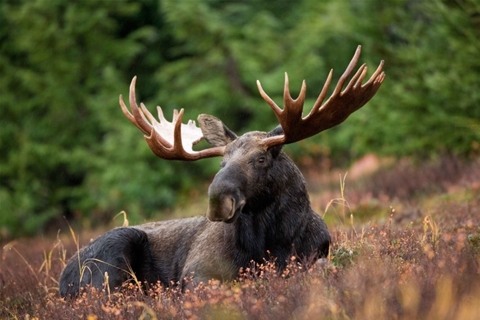Moose
Moose (Alces americanus) are the largest members of the deer family Cervidae as well as the tallest land mammals in North America.
Moose Facts:
- Moose may live up to 20 years in the wild, but the average lifespan ranges between 10-15 years.
- Bulls and cows come together during the breeding season or “rut” between mid-September and mid-October. Both sexes become vocal during this time as they actively seek a mate.
- Bulls use their antlers for both display and fighting in order to assert dominance and to secure breeding privileges with the cows.
- Cow moose give birth to one or two calves in May or June. In years when food is plentiful, the rate of twins increases.
- Moose calves mature quickly and can reach a weight of 100 kilograms in six months.
- Moose are surprisingly strong swimmers and can even sub-merge themselves completely to feed on aquatic plants
- Long legs and large cloven hooves help moose to travel through deep snow and soft mud.
- Moose have keen senses of hearing and smell.
- Moose are crepuscular - meaning they are most active during the periods around dawn and dusk.
Moose Safety Tips!
Moose are not normally aggressive but can be very dangerous if approached or startled, especially females with calves. Vehicle collisions are also a major safety concern associated with moose
- Never approach a moose. Give the animals a wide berth and ensure they have an escape route.
- If a moose does charge you, getting inside a nearby building or car is the safest option, but hiding behind a large tree or other solid object may effectively block the charge.
- Drive cautiously, scanning for moose along road sides, especially between dusk and dawn to avoid collisions.


